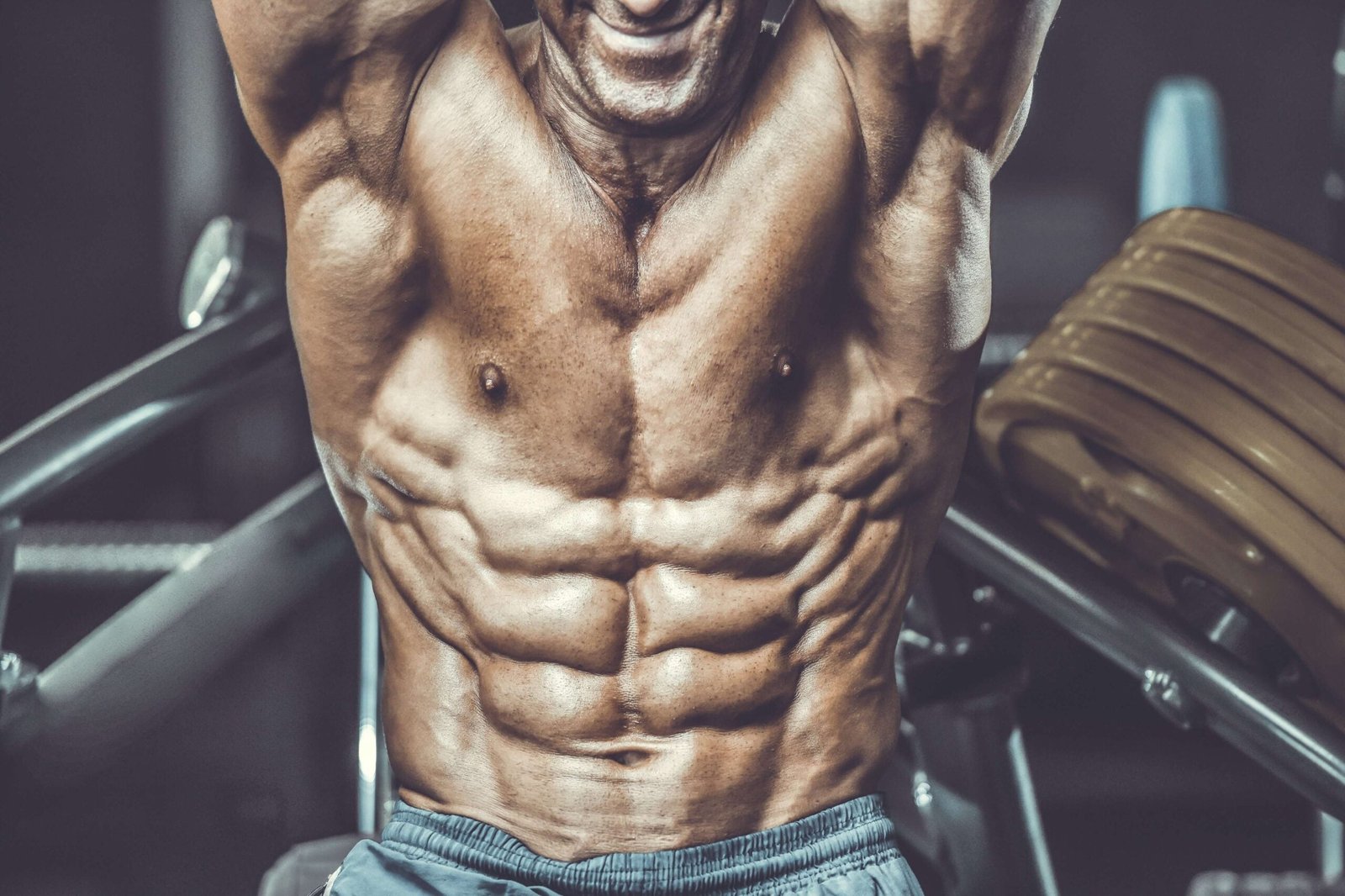Is improving the size and health of your butt your goal? Keep in mind that you have company. Recent years have seen a rise in the number of people interested in developing a more defined and muscular rear end. Around 20,000 buttock augmentation surgeries were performed in 2020, a 22% increase from the previous year, according to a report by the American Society of Plastic Surgeons.
On the other hand, you can get the same results without having surgery. In this post, we’ll examine how exercise can play a part in developing a big and healthier butt. We’ll break down the mechanisms through which exercise aids in muscle development and fat loss, and then offer targeted strategies for improving your workouts and seeing the greatest gains.
Read on to find out more about the power of exercise for developing big, healthier butt, whether you’re just getting started with workouts or planning to take them to the next level.
Why Exercise is Important for Achieving Big But
Getting your butt in shape and big through exercising is essential. By performing workouts like squats and lunges, you may strengthen your glutes and give your lower body a more toned and defined look. As an added bonus, a stronger butt can help boost your lower body power, equilibrium, and posture, beyond just looking good.
Maintaining a healthy weight and avoiding injuries can also be accomplished by include cardiovascular exercise and stretching as part of your regular regimen. So get up and active to improve your health and your bottom!
Also See: 18 Best Yoga Poses for Two People | Partner Yoga Poses
Understanding the Anatomy of the Buttocks
The glutes, or buttocks, are an intricate and essential portion of the human body. Everyone who wants to get stronger, perform better in sports, or just feel better should familiarize themselves with the anatomy of the buttocks.
1. The gluteal muscles
The three muscles that make up the buttocks are collectively known as the gluteal muscles. They are the gluteus maximus, the gluteus medius, and the gluteus minimus. When activated, the gluteus maximus extends the hip and externally rotates the thigh. Smaller muscles on either side of the hip, the gluteus medius and minimus abduct the hip and stabilize the pelvis.
2. Buttock muscle groups
There are several muscle groups besides the gluteal muscles that aid in maintaining the buttocks’ form and function. The hamstrings, quadriceps, hip flexors, and pelvic floor are all part of this system. The hamstrings, which can be found towards the rear of the thigh, are the muscles responsible for bending the knee and straightening the hip.
The quadriceps are the muscle group in the front of the leg that allows you to straighten your knee. In order to bend the hip forward, you need to use the muscles that make up the hip flexors, which are situated in the hip’s anterior region. The pelvic floor is a collection of muscles at the pelvic base that aid in pelvic organ support and regulate bowel and bladder function.
3. The role of these muscles in the body
Many body processes rely on the strength of the buttocks and adjacent muscles. Proper function of the gluteal muscles is crucial for upright posture, stable footing, and free movement. They’re also crucial to success in sports like running, jumping, and weightlifting.
Lower body muscles including the hamstrings, quadriceps, and hip flexors all play a role in an athlete’s ability to perform and avoid injury.
Despite their lack of involvement in locomotion or athletic performance, the pelvic floor muscles are crucial to your well-being. The inability to properly contract these muscles can lead to urinary and bowel issues, pelvic pain, and erectile dysfunction.
In conclusion, everyone who wants to increase their strength, mobility, or overall health and wellness should familiarise themselves with the anatomy of the buttocks and the areas surrounding them.
Improve sports performance, lessen injury risk, and keep your body running at peak efficiency with specific exercises that work the gluteal muscles and other muscle groups in this area.
How Exercise Can Help You Achieve a Bigger Butt
1. Lifting weights to gain muscular mass
Nonetheless, resistance training, such as weightlifting, is an excellent method for gaining buttocks muscle. Squats, lunges, and hip thrusts all focus on the gluteal muscles, which can be trained to increase butt size with regular practise. Moreover, resistance exercise helps improve general strength and lessens the likelihood of injury.
2. Cardiovascular exercise to burn fat
Increased butt size can be achieved by weight training and cardiovascular exercise. Burning fat and improving overall body composition through activities like jogging, cycling, and swimming can give the appearance of larger, more toned butts.
In addition to the obvious advantages to heart health and stamina, cardiovascular exercise has many additional positive effects on one’s body.
3. Exercises that target the gluteal muscles
While weight training and cardio are both important, there are also a number of exercises that focus on the gluteal muscles and can help you improve your size and tone them. Squats, lunges, hip thrusts, and glute bridges all fall under this category.
These exercises are designed to strengthen and tone the buttocks, so include them in your program can help you achieve your fitness goals faster.
Best Exercises for a Big and Healthier Butt
Many workouts can assist you in your quest to develop big, healthier butt. If you want a bigger, stronger butt, try these five exercises.
A. Squats

Squats are a great choice if you want to develop bigger, stronger butts. Squats also strengthen the quadriceps and hamstrings while also targeting the gluteal muscles. Position your feet shoulder-width apart, then turn your toes outward slightly to perform a squat.
Squat down, making sure your back stays straight and your knees are directly over your toes. Straighten up again and do a few more repetitions.
B. Lunges

Building a stronger, big and healthier butt can also be accomplished through lunges. Lunges target the quads, hamstrings, and glutes, much like squats. Step forward with one foot and bend your front knee to a 90-degree angle to complete a lunge. Once you’ve finished with one leg, you can switch to the other and repeat the process.
C. Deadlifts

Deadlifts are an excellent way to strengthen your lower body since they target your glutes, hamstrings, and back all at once. Position your feet so that your shoulders are slightly wider than your hips, then hold a barbell or dumbbells in front of your torso to complete a deadlift. Drop the load to the floor with a straight back and a hip-hinge. Straighten up again and do a few more repetitions.
D. Glute bridges

The gluteal muscles are primarily addressed in the exercise known as glute bridges. Glut muscle bridges are performed by lying on one’s back with knees bent and feet flat on the floor. Raise your thighs until they’re perpendicular to the floor, and then squeeze your glutes at the top of the action. When finished, return your hips to their starting position and do another set.
E. Hip thrusts

Gluteal muscles can also be worked specifically with hip thrusts. You can perform a hip thrust by sitting on the floor with your upper back propped up on a bench or other elevated platform. To perform this exercise, rest a barbell or other weight on your hips and raise your thighs up towards the ceiling while squeezing your glutes at the height of the movement. When finished, return your hips to their starting position and do another set.
Suggestions for Improving Your Workout’s Results
There are a number of elements to think about if you want to get the most out of your workout and reach your fitness objectives. Four ways to get the most out of your exercise routine are outlined below.
1. Proper form and technique
Workout form and technique are among the most crucial factors in achieving the desired results. Because of the increased risk of injury and decreased efficiency of your workouts, proper form is essential. Take the time to master the correct form for each exercise, and keep that form in mind as you work out.
2. Using progressive overload effectively
As the name implies, progressive overload involves gradually increasing the difficulty of your workouts over time. You can achieve this by lifting heavier weights, performing more sets and reps, or switching to a more challenging exercise.
You can keep improving and reaching your fitness objectives by always testing your limits and pushing yourself to accomplish more.
3. Rest and recovery
Recovery and downtime are important for any serious exercise routine. You can’t expect your muscles to get bigger and stronger without giving them time to rest and repair in between workouts. Avoid overtraining or overusing the same muscles by allowing for sufficient rest and recovery time.
4. Nutrition and hydration
To get the most out of your workout, you need also pay close attention to your diet and fluid intake. Eat a healthy diet of lean proteins, whole grains, and fresh fruits and vegetables before and after your workout, and don’t forget to drink enough of water. This will aid in optimizing your performance by providing your body with the nutrients it needs to repair and grow muscle.
Additional Strategies for Achieving a Big and Healthier Butt
Here are three more ideas to think about if you want a big and healthier butt.
Plyometrics and explosive motions
Building your gluteal muscles’ explosive power and power can be accomplished through plyometrics and other explosive exercises. Plyometrics are exercises that emphasize explosiveness and include jumping and squatting and punching and punching and jumping. Including these moves in your workout routine will force your muscles to adapt to new demands, allowing you to grow a firmer, big butt.
Resistance bands boost workout intensity
You can ramp up the difficulty of your workout without breaking the bank by investing in some resistance bands. For a more difficult workout, try using resistance bands with movements like squats, lunges, and glute bridges. With time, this can help increase muscle mass, leading to a fuller, stronger, and big butt.
Trying new workouts and splits
To sum up, trying out various workout splits and routines can help you find the most efficient method for gaining size and health in your butts. To build muscle endurance, you could, for instance, devote a few weeks to heavy training with fewer repetitions, and then switch to lighter weights and more repetitions.
As an alternative, you can separate your workouts into upper and lower body days, or use a variety of exercises and approaches to keep your routines interesting and effective.
Avoid These Butt-Building Mistakes
The following are some of the most frequent blunders people make when trying to enlarge their butt. You may maximize your efforts and speed up your progress towards your fitness goals if you just remember to avoid these pitfalls. These three common blunders should be avoided:
1. Ignoring the use of other muscles
Whilst the gluteal muscles are crucial, other muscle groups also play a role in butt development. Muscle imbalances caused by neglecting other muscular groups like the hamstrings, quads, and core can impede you from reaching your goals. Aim for a well-rounded and balanced routine that includes exercises for all of your muscle groups.
2. Overtraining or undertraining
Neither overtraining nor undertraining will help you achieve your goal of a larger butt. Overtraining increases the risk of injury, fatigue, and subpar performance, whereas undertraining has similar negative outcomes.
Find a happy medium between pushing yourself to your limits and giving yourself enough time to recover. If you feel like you’re overtraining or undertraining, pay attention to your body and make the necessary adjustments to your workout routine.
3. Overemphasizing cardio and neglecting weight training
While cardiovascular exercise is crucial, prioritizing it to the exclusion of weight training may be counterproductive if your goal is to increase butt size. Muscle and growth in the gluteal muscles can only be achieved by resistance exercise.
Squats, lunges, deadlifts, and glute bridges should all be a part of your routine, and you should strive for progressive overload as you go.
- “Understanding the Anatomy of the Buttocks” – This article from Healthline provides detailed information about the anatomy of the gluteal muscles and their role in the body: https://www.healthline.com/health/buttocks-anatomy
- “How Exercise Can Help You Achieve a Bigger Butt” – This article from Verywell Fit discusses the benefits of exercise for building a bigger butt and provides specific exercises and workout tips: https://www.verywellfit.com/how-to-get-a-bigger-butt-1229555
- “Best Exercises for a Bigger and Healthier Butt” – This article from Women’s Health Magazine provides an overview of some of the best exercises for building a bigger and healthier butt: https://www.womenshealthmag.com/fitness/a19994192/butt-exercises/
- “Tips for Maximizing the Effectiveness of Your Workout” – This article from Healthline offers tips for optimizing your workout routine, including proper form and technique, progressive overload, rest and recovery, and nutrition and hydration: https://www.healthline.com/health/fitness-exercise/maximize-workout
- “Additional Strategies for Achieving a Bigger and Healthier Butt” – This article from Shape Magazine provides additional tips and strategies for building a bigger and healthier butt, including incorporating plyometrics, using resistance bands, and experimenting with different workout routines: https://www.shape.com/fitness/workouts/5-ways-get-bigger-butt












